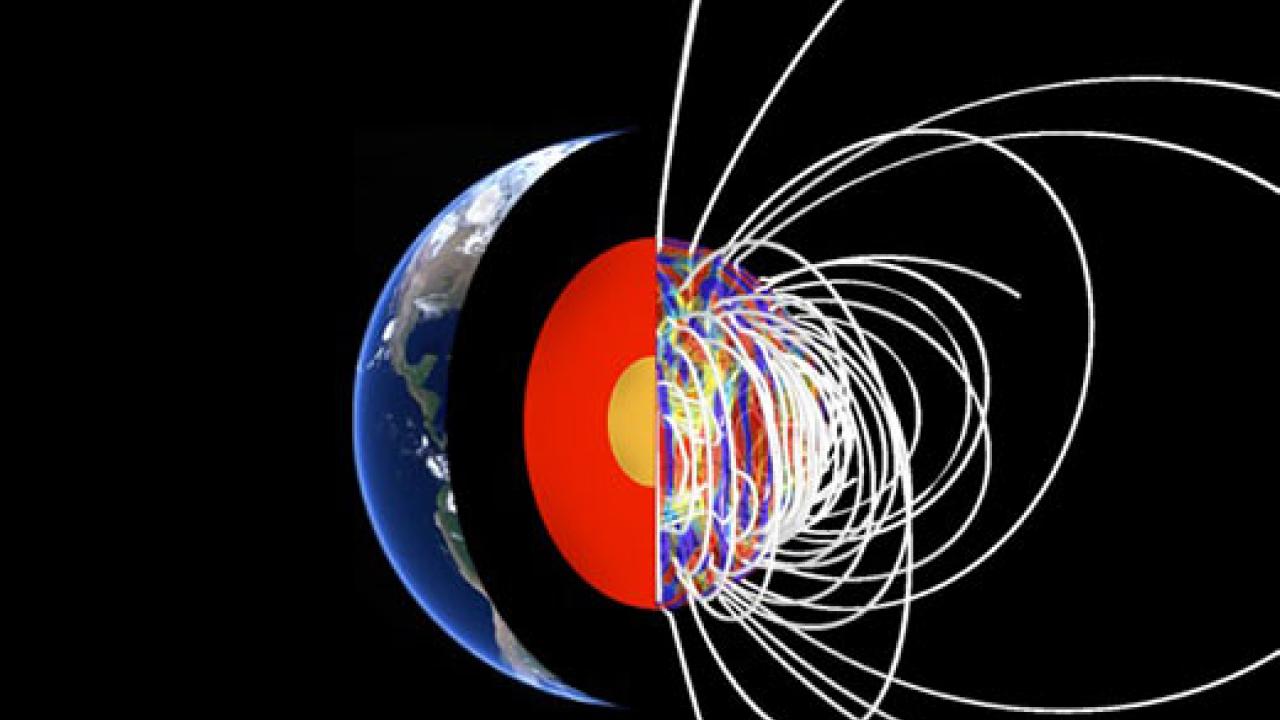Sometimes time is the best gift of all.
Eighty-three million core-hours on one of the world’s fastest supercomputers will be accessible to a group of scientists led by UCLA in collaboration with the Computational Infrastructure for Geodynamics, or CIG, based at UC Davis.
Project lead Jonathan Aurnou, a UCLA professor of planetary sciences and geophysics, and the multidisciplinary team will use the Mira supercomputer at Argonne National Laboratory to simulate the origins and evolution of the Earth’s magnetic field at an unprecedented scale, using code developed and released by CIG. The group will also simulate the magnetic field generation occurring inside Jupiter and the sun. The data sets generated will be open to the broader scientific community.
“We have never been able to simulate realistic magnetic field generation in turbulent liquid metal and plasma flows, even though that is what exists inside planets and stars,” Aurnou said. “But this INCITE project will allow us, for the first time, to do just that.”
The computing time was awarded to the team to use over three years through the Innovative and Novel Computational Impact on Theory and Experiment, or INCITE, program, which provides access to the U.S. Department of Energy’s Leadership Computing Facility with centers at Argonne and Oak Ridge national laboratories.
The project was one of 56 announced by the DOE’s INCITE program. Researchers from academia, government and industry will share a total of 5.8 billion core-hours on two supercomputers, Titan at Oak Ridge National Laboratory and Mira at Argonne.
Mira is an energy-efficient, 10-petaflop IBM Blue Gene/Q system capable of 10 quadrillion calculations per second. It can do in one day 20 years' work for an average personal computer. Mira is ranked the fifth fastest open science supercomputer in the world, and second only to Titan in the United States.
Supercomputing is used to solve challenging scientific problems in a wide range of research areas, from biology and astrophysics to materials science and renewable energy.
"This research is now possible because geophysicists and computer scientists in the Computational Infrastructure for Geodynamics collaborated to create and share software capable of using the largest computers for geosciences research,” said CIG director Louise Kellogg, a professor in the UC Davis Department of Earth and Planetary Sciences. Supported by the National Science Foundation, CIG advances earth science by developing and disseminating software for geophysics and related fields.
In addition to providing computing time on DOE supercomputers, the award also provides expertise and support from INCITE staff to ensure researchers make the most of the processing power of the computer.
“The INCITE program is the driver for some of the world’s most ambitious and groundbreaking computational research projects in science and engineering,” said James Hack, director of the National Center for Computational Sciences, which houses the Oak Ridge Leadership Computing Facility, a DOE Office of Science User Facility.
For a complete list of 2015 INCITE awards, see http://bit.ly/1u6ySL7.
Media Resources
Kat Kerlin, Research news (emphasis on environmental sciences), 530-750-9195, kekerlin@ucdavis.edu
Jonathan Aurnou, UCLA, (310) 825-2054, jona@epss.ucla.edu
Louise Kellogg, UC Davis, Computational Infrastructure for Geodynamics, (530) 752-3690, kellogg@ucdavis.edu
